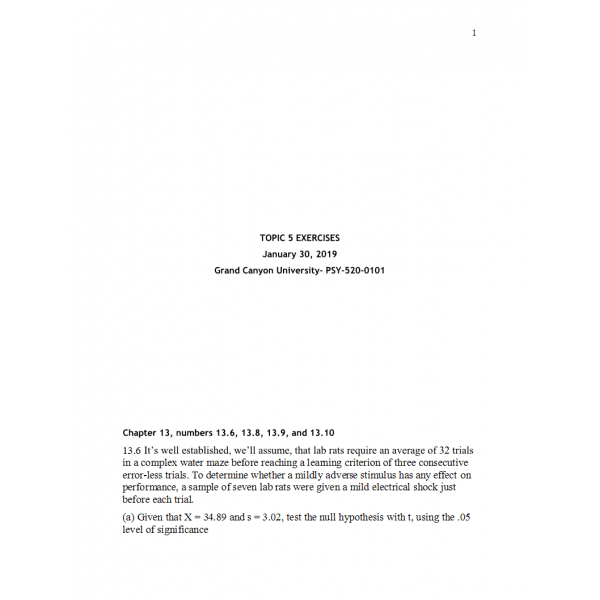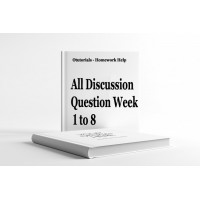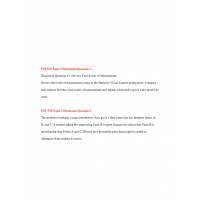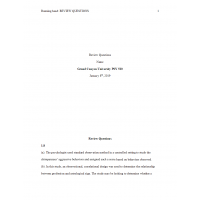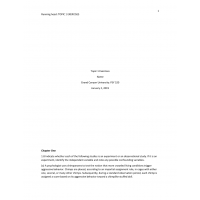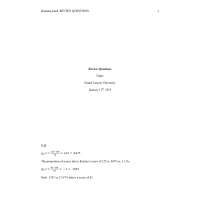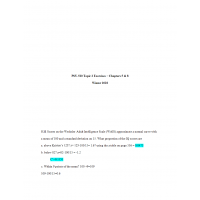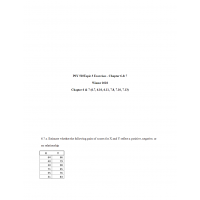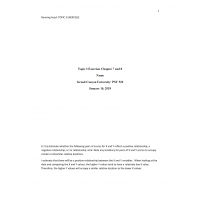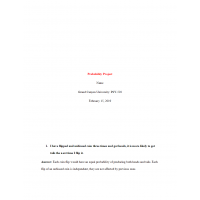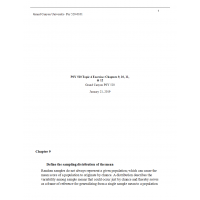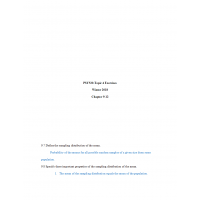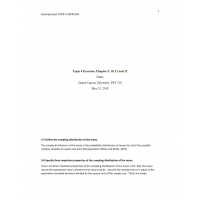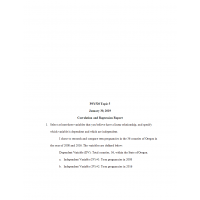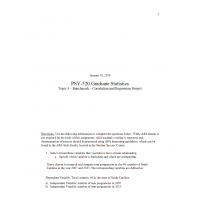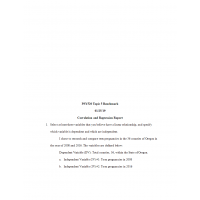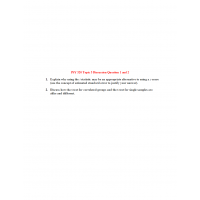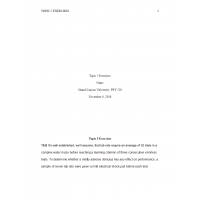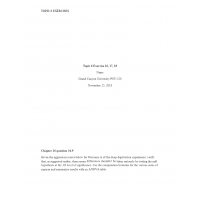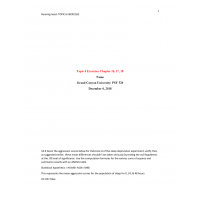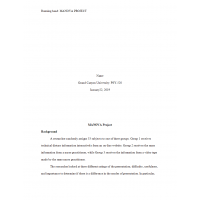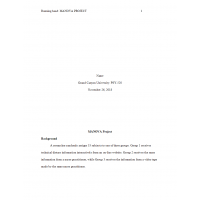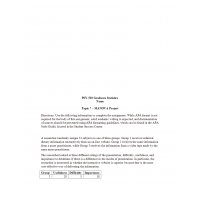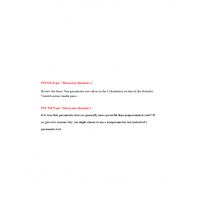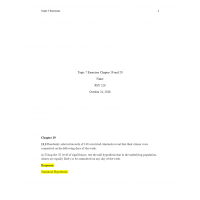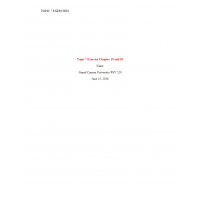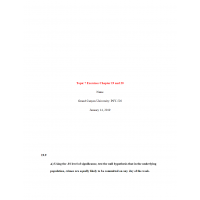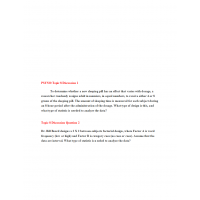PSY 520 Topic 5 Exercises
13.6 It’s well established, we’ll assume, that lab rats require an average of 32 trials in a complex water maze before reaching a learning criterion of three consecutive errorless trials. To determine whether a mildly adverse stimulus has any effect on performance, a sample of seven lab rats were given a mild electrical shock just before each trial.
13.8 Assume that on average, healthy young adults dream 90 minutes each night, as inferred from a number of measures, including rapid eye movement (REM) sleep. An investigator wishes to determine whether drinking coffee just before going to sleep affects the amount of dream time. After drinking a standard amount of coffee, dream time is monitored for each of 28 healthy young adults in a random sample. Results show a sample mean, X, of 88 minutes and a sample standard deviation, s, of 9 minutes.
13.9 In the gas mileage test described in this chapter, would you prefer a smaller or a larger sample size if you were
13.10 Even though the population standard deviation is unknown, an investigator uses z rather than the more appropriate t to test a hypothesis at the .05 level of significance.
14.11 To test compliance with authority, a classical experiment in social psychology requires subjects to administer increasingly painful electric shocks to seemingly helpless victims who agonize in an adjacent room.* Each subject earns a score between 0 and 30, depending on the point at which the subject refuses to comply with authority—an investigator, dressed in a white lab coat, who orders the administration of increasingly intense shocks.
14.12 To determine whether training in a series of workshops on creative thinking increases IQ scores, a total of 70 students are randomly divided into treatment and control groups of 35 each. After two months of training, the sample mean IQ (–X1) for the treatment group equals 110, and the sample mean IQ (–X2) for the control group equals 108. The estimated standard error equals 1.80.
14.14 An investigator wishes to determine whether alcohol consumption causes a deterioration in the performance of automobile drivers. Before the driving test, subjects drink a glass of orange juice, which, in the case of the treatment group, is laced with two ounces of vodka. Performance is measured by the number of errors made on a driving simulator. A total of 120 volunteer subjects are randomly assigned, in equal numbers, to the two groups. For subjects in the treatment group, the mean number of errors (–X1) equals 26.4, and for subjects in the control group, the mean number of errors (–X2) equals 18.6. The estimated standard error equals 2.4.
15.7 An educational psychologist wants to check the claim that regular physical exercise improves academic achievement. To control for academic aptitude, pairs of college students with similar GPAs are randomly assigned to either a treatment group that attends daily exercise classes or a control group. At the end of the experiment, the following GPAs are reported for the seven pairs of participants:
15.8 A school psychologist wishes to determine whether a new antismoking fi lm actually reduces the daily consumption of cigarettes by teenage smokers. The mean daily cigarette consumption is calculated for each of eight teen-age smokers during the month before and the month after the fi lm presentation, with the following results:
15.10 In a classic study, which predates the existence of the EPO drug, Melvin Williams of Old Dominion University actually injected extra oxygen-bearing red cells into the subjects’ bloodstream just prior to a treadmill test. Twelve long-distance runners were tested in 5-mile runs on treadmills. Essentially, two running times were obtained for each athlete, once in the treatment or blood-doped condition after the injection of two pints of blood and once in the placebo control or non-blood-doped condition after the injection of a comparable amount of a harmless red saline solution. The presentation of the treatment and control conditions was counterbalanced, with half of the subjects unknowingly receiving the treatment first, then the control, and the other half receiving the conditions in reverse order. Since the difference scores, as reported in the New York Times, on May 4, 1980, are calculated by subtracting blood-doped running times from control running times, a positive mean difference signifies that the treatment has a facilitative effect, that is, the athletes’ running times are shorter when blood doped. The 12 athletes had a mean difference running time, D, of 51.33 seconds with a standard
15.14 In Table 7.4 on page 173, all ten top hitters in the major league baseball in 2011 had lower batting averages in 2012, supporting regression toward the mean. Treating averages as whole numbers (without decimal points) and subtracting their batting averages for 2012 from those for 2011 (so that positive difference scores support regression toward the mean), we have the following ten difference scores: 14, 39, 61, 60, 13, 21, 50, 93, 16, 61.
| Institution & Term/Date | |
| Term/Date | Grand Canyon |
PSY 520 Topic 5 Exercise 1, Chapter 13, 14 and 15
- Product Code: 2019
- Availability: In Stock
-
$12.00

